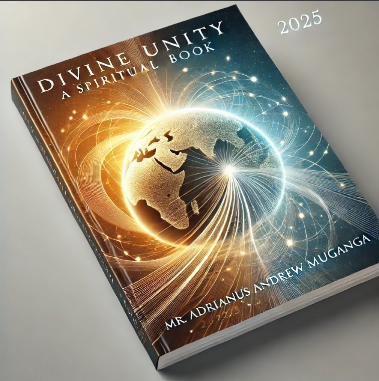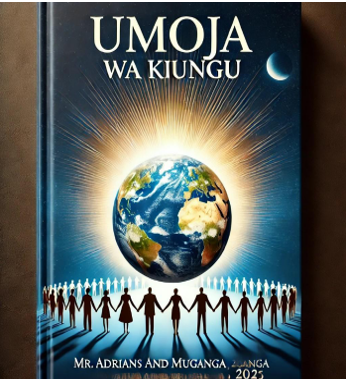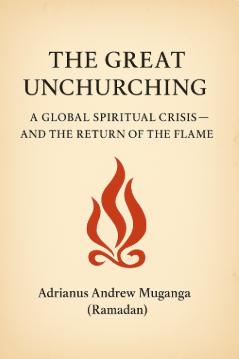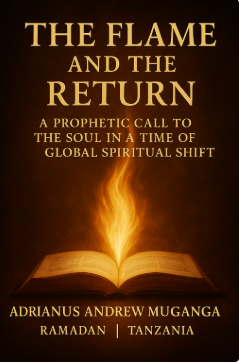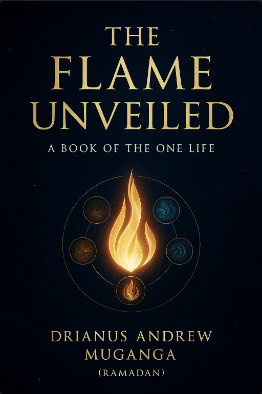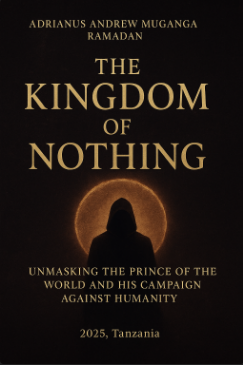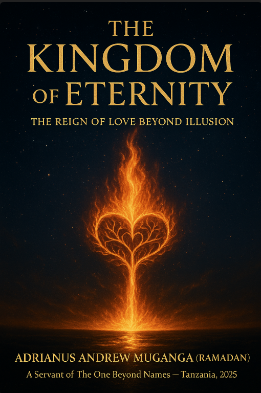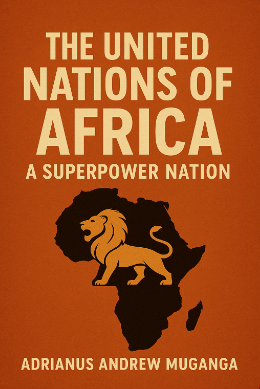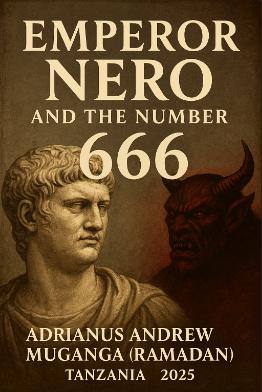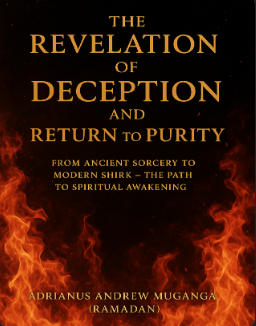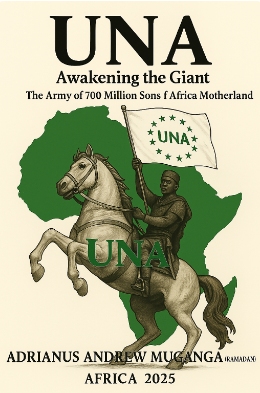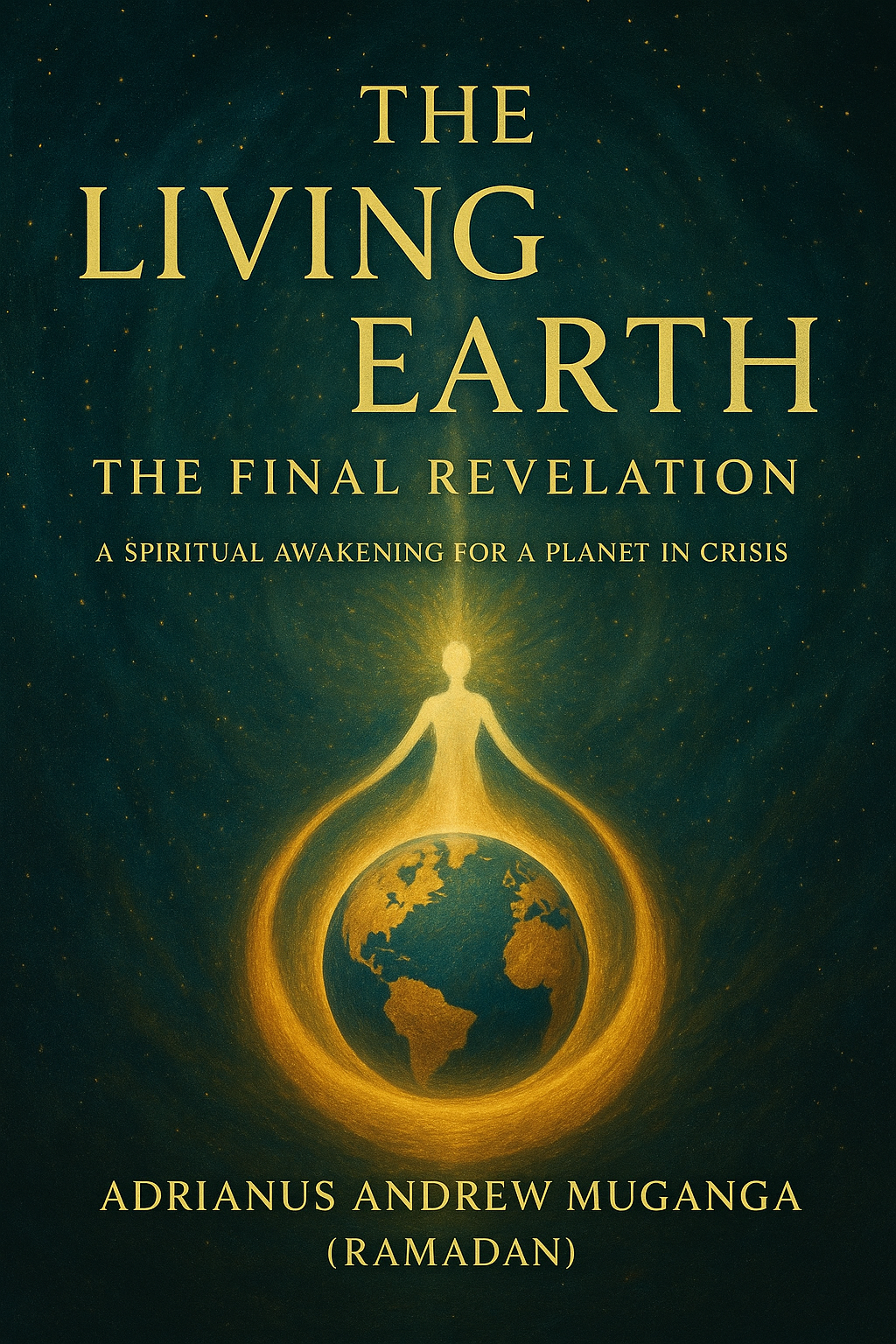
The Midnight / The Veil
Subtitle: Unmasking Africa’s Betrayal, Awakening Africa’s Destiny
Author: Adrianus Muganga
The Midnight / The Veil: Unmasking Africa’s Betrayal, Awakening Africa’s Destiny is a powerful manifesto by Adrianus Andrew Muganga (Ramadan) and Leonard Sachi Ngelela. It exposes the illusion of African independence, arguing that colonialism never ended but returned in new forms through corrupt elites and global systems of exploitation. The book dismantles the myth of poverty, showing that Africa is not poor but plundered — a land rich in minerals, fertile soil, and the youngest population on earth. Through history, statistics, and prophetic fire, the authors reveal how betrayal, propaganda, and division have kept Africa subdued while the world profits from its wealth. More than critique, this book is a call to action, urging Africa’s youth, leaders, and diaspora to rise, unite, and reclaim the unfinished dream of liberation. The midnight is deep, but dawn is near — and Africa’s destiny awaits.
Keywords for this book
You can only order 1 ebook at a time
Book summary
The Midnight / The Veil by Adrianus Andrew Muganga (Ramadan) and Leonard Sachi Ngelela is a manifesto that seeks to awaken Africa to its unfinished liberation. Written as the sequel to their earlier book The United Nations of Africa (UNA), it continues the struggle for continental unity, exposing the betrayals of false independence and the ongoing systems of exploitation that keep Africa divided and impoverished. The Central Message The book argues that Africa’s independence was never genuine. What the continent received in the 1950s and 1960s was not true freedom but flag independence — the outward appearance of sovereignty while economic and political control remained in foreign hands. This arrangement, sustained by African elites trained in colonial institutions, preserved the structures of exploitation that were established during colonial rule. The authors insist that Africa is not inherently poor. Instead, it is plundered. With 30% of the world’s mineral wealth, 60% of arable land, vast energy reserves, and the youngest population on the planet, Africa is one of the richest continents in potential. Yet poverty persists because of betrayal by leaders and manipulation by global systems. Structure of the Book The book is divided into six parts, each unveiling a different “veil” that has blinded Africa. The Veil of Independence – This section unmasks the illusion of freedom. It explains how colonialism merely changed its face, returning in black skin as African leaders betrayed their people by serving foreign interests and enriching themselves instead of building strong nations. Leaders became predators rather than protectors, and the dream of independence turned into another midnight of captivity. The Propaganda of Poverty – Here, the authors tackle the myth that Africa is poor. They highlight how propaganda, media control, and handouts during elections convince people to accept poverty as normal. By exporting raw resources cheaply and importing finished goods at high prices, Africa remains trapped in a cycle of dependency. Poverty is portrayed not as natural but as manufactured — a weapon used to control and silence. The Sleeping Giant – This part focuses on Africa’s youth, described as both betrayed and full of untapped potential. With more than 60% of Africans under 25, the continent has the youngest population in the world, which could be a foundation for growth. Yet unemployment, corruption, and lack of opportunity keep them marginalized. The authors argue that awakening Africa’s youth is essential for true transformation. Beyond the Midnight – The book shifts from critique to vision. It urges readers to break the chains of propaganda, rise in consciousness, and embrace truth. The authors stress that silence is no longer acceptable — fear, poverty, and hopelessness have long kept people subdued, but an awakening generation must reject these chains and reclaim its voice. The Call of Destiny – This section expands Africa’s struggle to the global stage. It critiques how Africa is divided at international tables, often bargaining against itself, and stresses the necessity of unity. The dream of a United Nations of Africa is presented as the only real path forward, where the continent can stand as an equal among world powers. The UNA Blueprint of Destiny – The book concludes with a practical vision for Africa’s future: one currency, one army, one parliament, and one united Africa. It includes a Youth Manifesto, emphasizing that young Africans must lead the charge toward liberation and reject both external exploitation and internal betrayal. Themes Several recurring themes run through the book: False Freedom: Independence was a disguise, not liberation. The structures of exploitation remained intact, maintained by local elites serving foreign masters. Betrayal by Leaders: African leaders are portrayed as “devils on the cross” — figures who were expected to carry the burden of service but instead crucified their own people through corruption and hypocrisy. Propaganda and Silence: Poverty is maintained through lies, propaganda, and a culture of silence enforced by fear, poverty, and hopelessness. Citizens become “parrots of poverty,” repeating slogans of their oppressors instead of demanding change. Africa’s Wealth: Despite the global narrative of poverty, Africa is immensely rich in resources, fertile land, and youthful population. Its problem is not scarcity but theft, dependency, and division. Unity as Salvation: Continental unity is presented as the only solution. Fragmentation into 55 states leaves Africa weak; unity promises strength, self-reliance, and dignity. Youth as Hope: The authors emphasize the urgency of youth awakening. Africa’s young population is not a burden but the most powerful asset, capable of reshaping the future if mobilized with truth and vision. Tone and Style The book blends history, statistics, and political analysis with passionate, prophetic prose. It is both academic and poetic, filled with metaphors of midnight, dawn, chains, and veils. It does not merely inform but seeks to ignite action — urging readers to weep, reflect, and rise in resistance. Calls to Action The authors direct messages to various audiences: To African Leaders: A warning against pride, corruption, and betrayal. They are urged to abandon personal gain and embrace unity, or risk being remembered in history’s “book of greed.” To African Youth: A call to rise, resist propaganda, and take ownership of their destiny. To the Diaspora: An invitation to return, contribute, and join the movement of unity. To Global Powers: A critique of exploitation and a call for genuine partnership instead of neo-colonial domination. To Allies Beyond Africa: Recognition of figures who have encouraged Africa’s self-reliance, with an invitation to support cooperation based on respect, not pity. Conclusion The book ends with hope. While midnight is deep and betrayal is heavy, the dawn is near. The veil that blinds Africa is tearing, and a new generation is rising. The authors believe the time is now — not tomorrow — for Africa to claim its true freedom, unity, and destiny. Ultimately, The Midnight / The Veil is not just a critique of Africa’s past and present but a prophetic declaration of its future. It insists that Africa’s story is not one of poverty but of plunder, not of weakness but of division — and that unity, courage, and truth will lead to liberation. It challenges every reader, especially the youth, to become part of this awakening.
